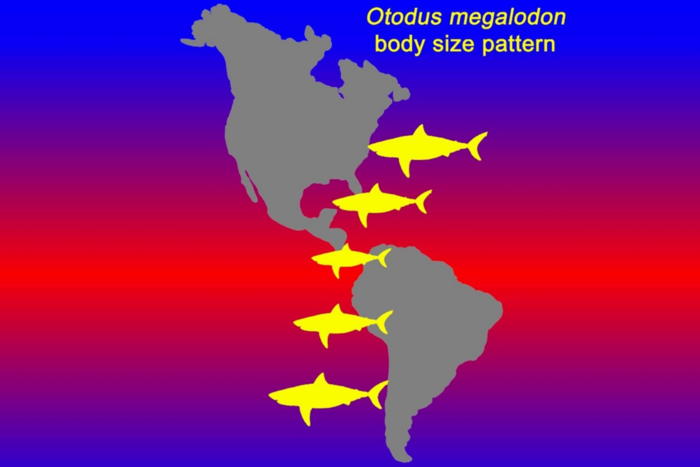Researchers took a renewed look at the body size of the famed Megalodon and discovered that the famed shark grew much larger in colder waters following the so-called Bergmann's rule.
Image Credit: Herschel Hoffmeyer via Shutterstock
Megalodon sharks, or Otodus Megalodon, roamed the oceans between approximately 3.6 and 15 million years ago. Teeth found all across the globe reveal that they were enormous compared to the sharks we encounter today.
Modern-day great white sharks can reach a length of about 6 meters, which makes for a pretty imposing sight. Nonetheless, a great white shark would be dwarfed in comparison to ancient Megalodon sharks; scientists estimate that they reached a monumental length of at least 15 meters (50 feet) and quite possibly even 20 meters (65 feet).
A fossilized Megalodon Tooth compared to a tooth from a modern great white shark - Image Credit: Mark_Kostich - HDR tune by Universal-Sci
Where do large fish live?
A group of scientists took a new look at the locations of Megalodon teeth findings together with calculated body length and discovered something interesting, mainly that their size follows a geography-driven ecological pattern known as Bergmann's rule.
“The idea of this new study originated from casual conversation that took place during a recent fishing trip to the Florida Keys by the lead author, his family and me, stemming from a basic question: where do large fish live?” said co-author Martin Becker, a professor of environmental science at William Paterson University in New Jersey
Bergmann's rule
Named after German biologist Carl Bergmann, Bergmann's rule is a wide generalization demonstrating that bigger animals flourish in cooler climates since their size helps them maintain heat more effectively than animals with smaller bodies.
Some Megalodon sites were formerly identified as potential nursery areas because those sites yielded smaller Megalodon teeth on average compared to other areas with Megalodon discoveries. However, the new investigation uncovered that many areas that were formerly recognized as nursery areas are located near the equator, where water is warmer.
According to Harry Masch, another co-author of the study, it is still possible that Megalodon sharks could have used nursery sites to raise young sharks. But the research study indicates that fossil localities consisting of smaller Megalodon teeth may instead be the result of individual sharks attaining smaller overall body sizes simply due to warmer water.
Schematic drawing showing the general body size pattern using hypothetical silhouettes. It shows and increase in body size towards cooler waters - Image Credit: DePaul University/Kenshu Shimada
Even though a deceivingly simple question launched the study, its results may have significant implications for comprehending the effects of modern-day climate change on the habitat shifts towards colder waters by larger apex predators like sharks.
The team published their findings in the scientific journal Historical Biology, listed below. Be sure to check it out if you are interested in more details about the research.
Sources and further reading:
Revisiting body size trends and nursery areas of the Neogene megatooth shark, Otodus megalodon (Historical Biology)
How big is a Megalodon? (Universal-Sci)
If you enjoy our selection of content, consider subscribing to our newsletter - (Universal-Sci Weekly)
FEATURED ARTICLES:













